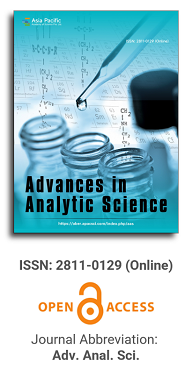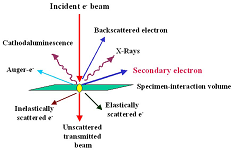
Asia Pacific Academy of Science Pte. Ltd. (APACSCI) specializes in international journal publishing. APACSCI adopts the open access publishing model and provides an important communication bridge for academic groups whose interest fields include engineering, technology, medicine, computer, mathematics, agriculture and forestry, and environment.

Issue release: 30 June 2025
The quality and safety indicators of a new type of multigrain bread using freshly obtained rye malt were studied. Hydrogen peroxide as a safe prooxidation activator and aqueous phytoextracts as natural antioxidants were used for the bioactivation of grain. The choice of phytoextract was made by comparing the antioxidant properties of thyme and oregano obtained with warm (60 ℃) or hot (80 ℃) extraction. The rate of accumulation of organic acids and reducing substances was maximum during malting under the influence of thyme extract (80 ℃). Oregano extracts were used to make rye-textured flour. The paper describes a new method for producing emulsified malt, known as “rye cream”. Unlike other methods, it is proposed to use not dried malt, but freshly obtained rye malt extract. This made it possible to form the adaptogenic properties of the food system, which was evident from the results of the antioxidant activity assessment. This assessment was carried out at different stages of the bread production process. It was shown that at the stage of rye cream production, the oxidation-reduction balance of the food system was shifted towards prooxidants, so the use of phytoextracts with antioxidant properties was necessary. At the dough production stage, the balance changed in the opposite direction, and antioxidants began to dominate the food system as functional nutritional components. Multigrain bread had antioxidant activity twice as high as the standard (Borodinsky bread) and had better characteristics compared to two analogues. Under the influence of multigrain bread, the production of free radicals was inhibited more gently than under the influence of rye bread “BIO”. Another analogue, Fitness bread, had the properties of a strong prooxidant, not an antioxidant. According to the results of an objective assessment in independent laboratories, multigrain bread with rye cream met regulatory requirements for quality and safety, which was confirmed by the results of physicochemical and microbiological analysis.
Issue release: 30 June 2025
In this study, a bacterial protein-coated nanoparticle system is modified as a new biosorbent. Escherichia coli (E. coli), and Staphylococcus aureus (S. aureus) bacterial proteins are collected, and successfully coated onto zinc oxide nanoparticles (ZnONPs). The new biosorbents are combined between the attractive surface properties of the nanoparticles and the adsorbed protein corona. ZnONPs, ZnONPs/E. coli, and ZnONPs/S. aureus were characterized using X-ray diffraction (XRD), Brunauer-Emmett-Teller (BET), Scanning Electron Microscopy (SEM), and Infrared spectroscopy (FT-IR) studies analysis. The Bradford method was used to ensure the presence of protein corona on the modified surface. The addition of bacterial proteins to the surface of the ZnONPs alters its activity through modifications of its size, shape, surface charge, and other characteristics. The improvement of the functional groups and surface charge of the modified biosorbents makes it more efficient for the removal of dyes. ZnONPs, ZnONPs/E. coli, and ZnONPs/S. aureus were used for the removal of trypan blue (TB) dye from contaminated wastewater. The TB dye was completely removed (98%–100%) using ZnONPs/E. coli, and ZnONPs/S. aureus within 25–30 min, whether in the dark or light conditions, over a wide pH range (5–9). The negative values of ∆G showed the spontaneous nature of the removal process. The ∆H values confirmed an endothermic removal in the dark and an exothermic removal in the light. ZnONPs/E. coli, and ZnONPs/S. aureus were applied for the removal of TB dye from real wastewater samples, and their efficiencies were proven. The average removal rate of TB dye using ZnONPs E. coli, and ZnONPs/S. aureus was 92 % which is more efficient than that of ZnONPs (87 %), and the average value of RSD% was 1.7 % (n = 5).
Issue release: 30 June 2025
Since coliform bacteria can raise the risk of infectious diseases in the most susceptible groups, their presence in water poses a possible concern to public health. When the physicochemical and microbiological quality of the water is uncertain, the situation becomes more complex. This study aims to assess the drinking water quality in three Territorial Base Organizations (TBOs) of the Municipality of Vinto-Cochabamba as well as the link between the TBOs and the microbiological parameters. According to Bolivian Standard 512 (NB 512), laboratory analyses of 30 samples collected from various residences (10 samples per TBO) demonstrate compliance with the upper limits of allowable values for physicochemical parameters (pH, conductivity, alkalinity, and hardness). The microbiological parameters were subjected to chi-square analysis, showing enough evidence to confirm with 95% confidence that the results of total and heat-resistant coliforms do not depend on the TBO (p = 0.36). By comparing the results of household water consumption with those of water supplied, it can be hypothesized that contamination of microbiological origin occurs either in the distribution pipes, household tanks, and/or the water use practices of each household. Of the 30 samples analyzed, only 11 met the maximum permissible limit for total coliforms, whereas 25 of the 30 samples met the maximum permissible limit for total coliforms.
Issue release: 30 June 2025
This study aimed at investigating the weathering of the source area and the geochemistry of the soils around Mount Bamboutos, West Region, Cameroon. In this study, soil samples were collected from a depth of 0–40 cm. The soil samples were analyzed using inductively coupled plasma mass spectrometry (ICP-MS). Significant SiO2 (63.37–73.05 wt.%) content recalculated to an anhydrous basis and adjusted to 100% (SiO2 (adj)) indicates the abundance of quartz and kaolinite in soil samples. The enrichment of Al2O3 (9.98–15.12 wt.%) suggests the presence of aluminosilicate minerals such as clay minerals, muscovite, and feldspars. The considerable Fe2O3 (0.01–11.04 wt.%) content relates to the mechanical erosion of ferrallitic soil or to Fe-source rock weathering. The elevated LaN/YbN levels indicate that the soils were derived from heterogeneous source rocks during weathering. The inverse correlation between SiO2 and Fe2O3, MgO, TiO2, and P2O5 indicates the prevalence of heavy minerals, which are likewise influenced by the relative amount of quartz. The positive Ce anomalies may result from the redox conditions. Weathering indices such as the plagioclase index of alteration (PIA: 77.03%–97.75%), Chemical Index of Weathering (CIX: 58.25%–66.83%), chemical weathering index (CIW: 91.31%–99.13%), and chemical index of alternation (CIA: 50%–70%) all signify moderate to intense weathering in the source area, which occurred in hot, humid climatic conditions. This is evidenced by the removal of labile cations (Ca, Na, and K) in relation to stable residual components (Al and Ti). The relatively high Ce anomalies in the soil samples (Ce/Ce* = 0.01 to 7.44; average 2.39) suggest intense chemical weathering.
Issue release: 30 June 2025
The development of nutritionally enhanced snacks is a strategy to address protein-energy malnutrition, particularly in developing regions. This study investigated proximate and sensory characteristics of extruded puffed corn snacks fortified with varying levels (0%, 5%, 10%, 15%, and 20%) of catfish (Clarias gariepinus) paste. Proximate analysis was performed based on the methods of the Association of Official Analytical Chemistry (AOAC). 30 untrained panelists assessed appearance, aroma, taste, texture, and overall acceptability using a nine-point hedonic scale. Incorporation of catfish significantly enhanced the snacks’ nutritional profile. Moisture and protein content increased from 6.04% (control) to 8.62% at 15% inclusion and from 11.43% (control) to 17.19% at 20%, respectively. Ash rose from 1.90% (control) to 2.47% at 20%, while crude fiber decreased from 5.33% (control) to 3.01%–3.36% at all inclusion levels. While carbohydrates declined from 73.73% to 66.41% at 20%, fat content increased from 1.57% (control) to 2.58% at 10%, before slightly decreasing at 20% to 2.27%. There was a progressive increase in acceptability, with the highest mean score of 5.77 at 15% catfish inclusion, followed by a slight decline at 20% (5.63). The standard deviation decreased as catfish inclusion increased, indicating more consistent consumer preferences. The skewness and kurtosis values of the 15% showed strong consumer preference. Sensory evaluation showing a 9-point hedonic scale showed an increase in acceptability with the highest mean score of 5.77 at 15% catfish inclusion. Sensory score declined at 20% inclusion, likely due to an intensified fishy aroma. The extrusion process preserved desirable textural properties and contributed to enhanced flavor, supporting the potential of catfish as a valuable ingredient in nutritionally enriched puffed corn snacks. The study demonstrates the potential of African catfish as a fortifying ingredient in snacks with a balance between nutritional enhancement and sensory appeal. Due to under-exploration of the fish species in corn snack production, this study offers a promising approach to improving the nutritional quality of snacks without compromising consumer acceptability.
Issue release: 30 June 2025
Introduction: For many years, chickpeas were considered a restricted host species for nodulation, although recent studies describe greater bacterial diversity associated with the crop, allowing for increased knowledge of this symbiosis to obtain isolates that are efficient in their contribution. Objective: To characterize and identify an isolate obtained from chickpea plant nodules and evaluate its effectiveness under field conditions. Materials and methods: The research was conducted in the laboratories of two centers: the Instituto de Investigaciones Fundamentales en Agricultura Tropical “Alejandro de Humboldt”, Cuba, and the Centro Nacional de Recursos Genéticos, Mexico. The research was also conducted under field conditions in two campaigns during 2018 and 2020 to demonstrate its effectiveness in crop interaction at the first center. Isolate R3 was identified at the taxonomic level by sequencing four genes. A completely randomized design was used for laboratory experiments, while plant trials were conducted using a randomized block design. The results were subjected to an analysis of variance and the means were compared according to the Tukey test (p < 0.05). Results: Isolate R3 showed variability in its morphophysiological, physiological, and biochemical characteristics. Furthermore, it responded significantly differently than the other treatments in the growth and yield indicators evaluated in chickpeas. Conclusions: Rhizobium pusense was identified for the first time in Cuba associated with chickpea nodules. The strain showed positive growth at pH levels between 5.5 and 9.0 and temperatures ranging from 29 °C to 38 °C, demonstrating its tolerance to these factors. Its inoculation in chickpeas stimulated nodule formation and increased yield variables.
Issue release: 30 June 2025
Impurities in active pharmaceutical ingredients (APIs) and pharmaceutical drug products (DPs) lead to broader antithetical effects related to drug safety, efficacy, and regulatory compliance. This review discusses organic, elemental, and inorganic impurities, and residual solvents and stresses their impact on the quality of APIs and pharmaceutical DPs regarding patient safety. It endorses immensely developed contemporary analytical techniques like High-performance Liquid Chromatography (HPLC), and Gas Chromatography (GC), for organic impurities and discusses their hyphenated Mass Spectrometry (MS) chromatographic methodologies. Atomic Absorption Spectroscopy (AAS), Inductively Coupled Plasma (ICP) hyphenated with MS, and Optical Emission Spectroscopy (OES) techniques are discussed for mainly improved sensitivity and accuracy in the detection and identification of elemental and inorganic impurities. High-Resolution Mass Spectrometry (HRMS), Supercritical Fluid Chromatography (SFC), and ICP-hyphenated techniques alongside automation are among the emerging technologies that are discussed concerning their impending potential to solve intricacies related to complex drug matrices, challenging regulatory requirements, and new impurity profiles. The review underlines the discussion on harmonized global regulations and affordable access to advanced analytical techniques so that wider adoption is facilitated in the pharmaceutical industry. Imminent prospects are Artificial Intelligence (AI) incorporation, Machine Learning (ML), and green analytical methodologies to overcome the present confinements and to cater to the growing demands of the progressive pharmaceutical sector. This in-depth analysis is intended to help pharmaceutical stakeholders embrace novel impurity management approaches resulting in significantly enhanced drug quality and better healthcare outcomes on a global scale.
Cultural relics carry splendid civilizations, inherit historical culture, and are precious heritage of all mankind. Due to the preciousness of cultural relics, which are non-renewable, and the basic principle of cultural relic protection with minimal intervention, non-destructive analysis technology has always been the most important technical means of material analysis in the research of cultural relic production technology, deterioration mechanism, and protection and restoration. Therefore, the research and development and application of new non-destructive analysis technology is an important research direction for the protection and utilization of cultural relics. In recent years, portable hyperspectral spectrometers originated from the field of remote sensing have shown great application potential in the analysis of cultural relic materials, and have been successfully applied in the restoration of cultural relics such as stone ancient buildings and paintings. As a non-invasive spectral technology that does not require sampling, the portable hyperspectral instrument can obtain a full-band, high-resolution reflectance spectrum covering the visible light-near infrared-shortwave infrared band (350–2500 nm) in a very short time. At the same time, it is highly portable and has no special requirements for the working environment, light source, etc. It can be used in situ at the site of field cultural relics or ruins. In addition, while collecting spectral data, remote sensing technology can also be used to achieve remote transmission and analysis of data. The above technical characteristics give it unique application advantages in the analysis of cultural relics materials. Based on the basic principles of spectral technology, this paper first introduces the equipment models and performance indicators of portable ground feature hyperspectral instruments commonly used in the analysis of cultural relics materials. Secondly, it carefully sorts out its application status in the qualitative and quantitative analysis of organic/inorganic cultural relics materials, analysis of cultural relics protection materials, and in-situ and real-time monitoring of cultural relics restoration in the past decade. After that, it discusses in depth the two key issues that affect the application effect of this technology, namely the specification of spectral preprocessing and the establishment of a standard spectral library. Finally, it looks forward to the development trend of this technology, and it is expected to have broad prospects in the analysis of fragile organic cultural relics, the combined application of multiple analysis techniques and quantitative analysis research.
1.jpg)
Prof. Sivanesan Subramanian
Anna University, India


 Open Access
Open Access



.jpg)
